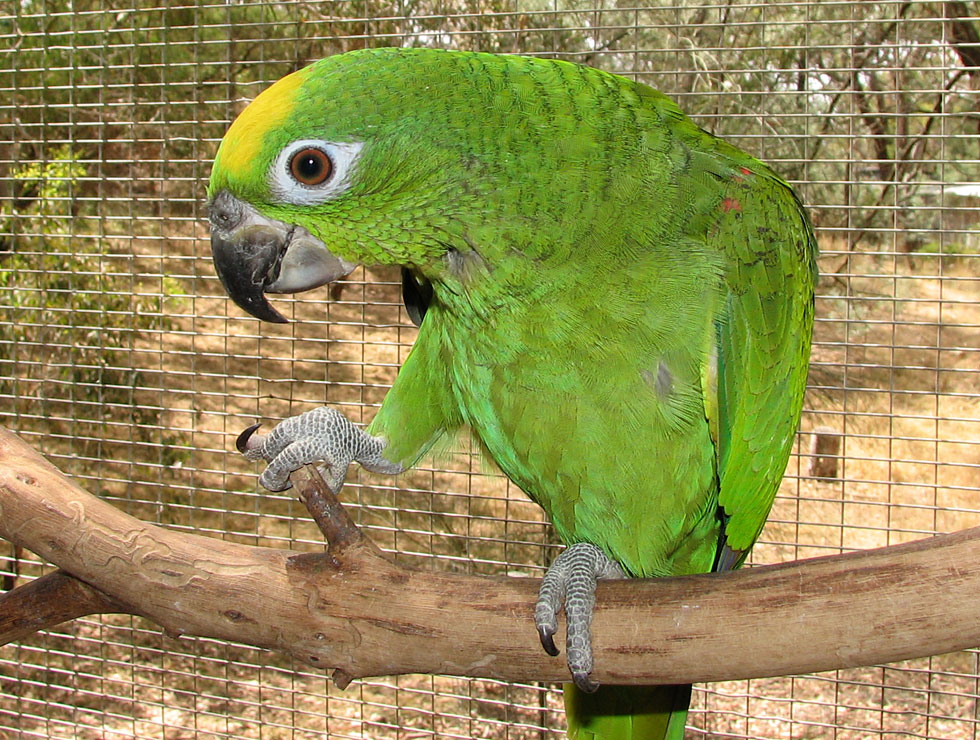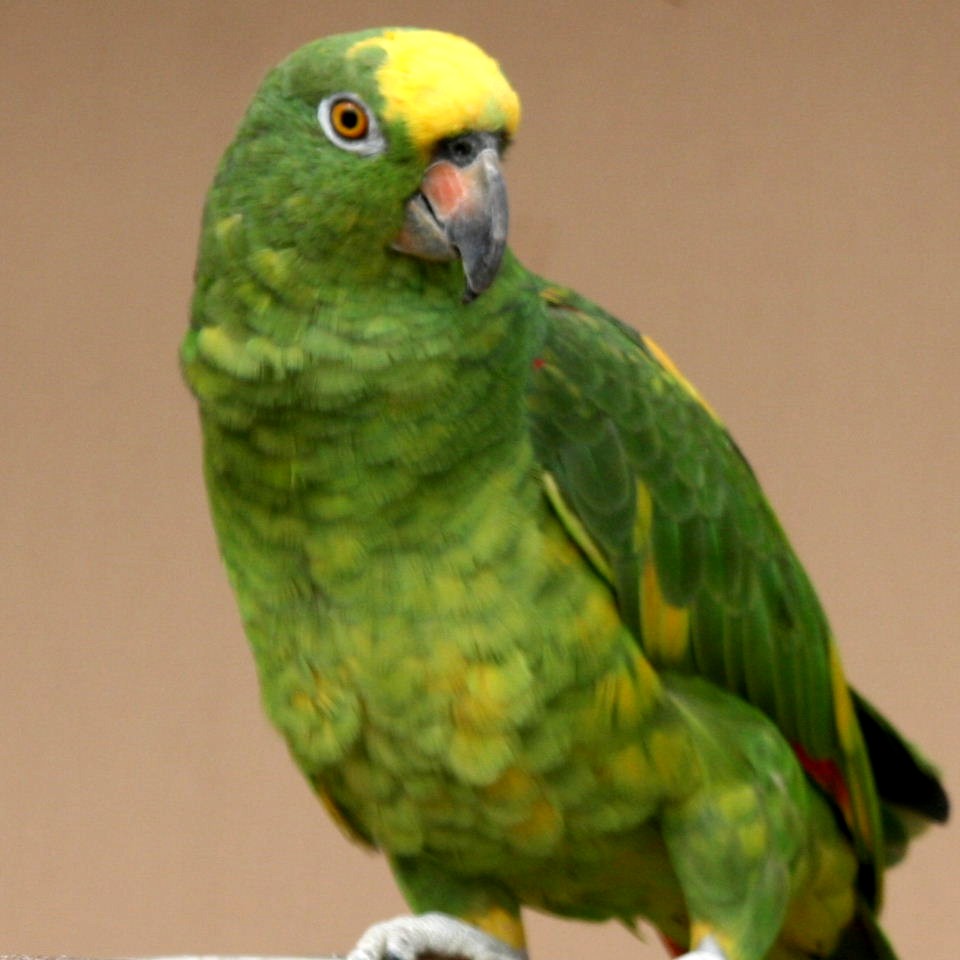
Amazona ochrocephala
SUBFAMILY
Psittacinae
TAXONOMY
Psittacus ochrocephalus Gmelin, 1788, Venezuela. Ten subspecies.
OTHER COMMON NAMES
English: Yellow-crowned parrot, yellow-headed Amazon, yellow-
naped Amazon; French: Amazone а front jaune; German:
Gelbscheitelamazone; Spanish: Amazona Real.
PHYSICAL CHARACTERISTICS
13.8 in (35 cm); 08–1.1 lb (405–561 g). Stocky, short-tailed
species with strong geographical variation; northern birds have
entirely yellow head; southern birds have yellow forehead and
nape. Juveniles entirely green.
DISTRIBUTION
A. o. ochrocephala: east Colombia through Venezuela to
Guianas, Trinidad, and Parб, north-central Brazil. A. o. xantho-
laema: Marajу Island, Amazon River, north Brazil. A. o. nattereri:
south Colombia, east Ecuador and east Peru to north
Bolivia and west Brazil. A. o. panamanensis: northwest Colombia
to west Panama. A. o. auropalliata: northwest Costa Rica to
south Mexico. A. o. parvipes: northeast Honduras and north
Nicaragua. A. o. caribaea: Bay Islands, Honduras. A. o. belizensis:
Belize. A. o. oratrix: Pacific and Caribbean lowlands of Mexico;
introduced to Florida and California. A. o. tresmariae: Tres
Marнas Islands, west Mexico.
HABITAT
Lowlands; variety of wooded habitats, including tropical forest
and deciduous woodland, gallery forest in open country, tall
scrubland, riverine secondary growth, mangroves, Pinus woodland,
stands of Mauritia palms, remnant woodlots in cultivation,
and suburban parks or gardens; in Amazon River basin
prefers seasonally inundated forest.
BEHAVIOR
Sedentary, though some local movements with changing food
supplies. Large flocks may congregate at nighttime roosts, but
during the day small parties of up to 10 usually seen feeding in
treetops; quiet while feeding but when disturbed, do not call
until well away from tree; strong flier, flying quite high on
long-distance flights to and from nighttime roosts; paired birds
remain close together and readily discernible within flocks; associates
with other parrots at clay-licks on exposed banks.
FEEDING ECOLOGY AND DIET
Feeds arboreally, taking seeds, nuts, fruits, berries, blossoms,
and probably leaf buds; uses foot to hold fruit while extracting
seeds with bill; fond of maize and cultivated fruits.
REPRODUCTIVE BIOLOGY
Monogamous. Breeding recorded mainly December–May. Nest
in tree hollow, often in dead branch or decayed palm stump,
also in hole excavated in arboreal termitarium; hollow prepared
mostly by female for up to one month before egg-laying;
clutch of two to four eggs incubated for 25–26 days by female,
male remaining near nest entrance; sitting female fed by male;
in captivity, young birds left nest two months after hatching.
CONSERVATION STATUS
Generally common, though locally scarce; yellow-headed subspecies
(A. o. oratrix and A. o. belizensis) threatened by capture
for live-bird trade and by deforestation; in 1990s population of
endangered oratrix estimated at below 7,000. Listed on CITES
Appendix II.
SIGNIFICANCE TO HUMANS
Reputation as excellent “talker,” so popular as pet in all parts
of range; yellow-headed subspecies also in strong demand for
international trade. Reported to cause damage to maize crops
and in orchards.
Photo Gallery of - Yellow-crowned Amazon




 Animalia Life
Animalia Life